Sensor Sourcing
South-Electronic
Your Premier Source for Sensors
Welcome to South-Electronic, your trusted partner for high-quality sensor sourcing.
We specialize in providing precision and reliability across a wide range of electronic applications. From consumer electronics to automotive and industrial sectors, our sourcing services ensure your projects run smoothly and efficiently. With a commitment to excellence, we guarantee optimal performance in every product we deliver.
Why Choose South-Electronic?
-
Custom Solutions
Tailor-Made for your project.
Work closely with South-Electronic to customize your Sensor solution to ensure it precisely meets your specific requirements. Whether it's a specialized component or a complex design, you can rely on us to provide the products you need. -
Premium Quality
You deserve the best, and quality is our top priority.
With our rigorous quality control processes, including thorough inspections and testing, we guarantee that your products will meet the highest standards. Our Sensors are defect-free, so you can count on them to perform reliably in your production. -
Clear Communication
Provide you with responsive, clear and efficient service.
That’s why we provide clear, responsive support throughout the entire process. Whether you have a question or need an update, we’re here to keep you informed and make sure your project stays on track. -
Competitive Pricing
You want the best quality at the best price.
That’s why we offer top-quality Sensors at competitive prices. You can maximize your profit margins without sacrificing the high standards you require. We offer cost-effective solutions without cutting corners on quality, so you can stay ahead of the competition. -
Fast Global Shipping
You need a partner who can keep up with your fast-paced business.
We offer global shipping with fast turnaround times, so your PSensors arrive when you need them. With our reliable logistics, you don’t have to worry about delays. You can stay on schedule and keep your production running smoothly.
Related Project We had Done
Customer Reviews
Common Questions
Most Popular Questions
Send us a message
The more detailed you fill out, the faster we can move to the next step.
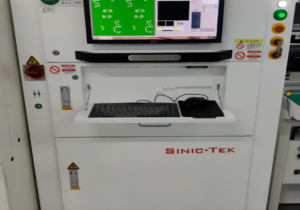
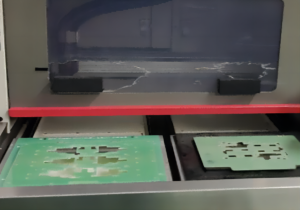
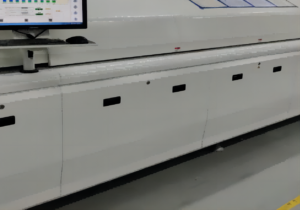
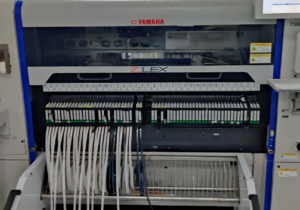
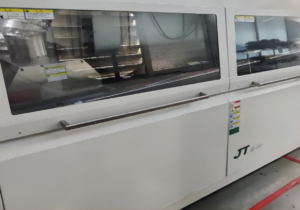
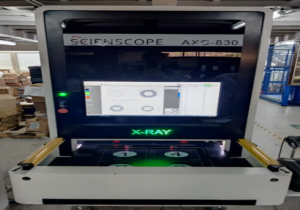

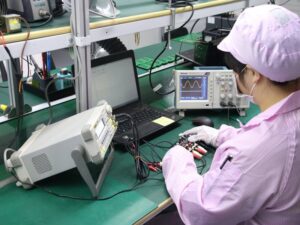

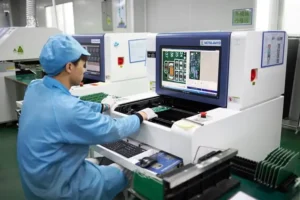



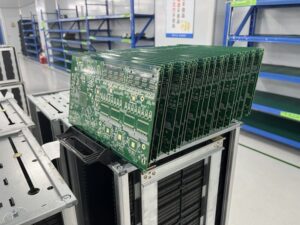

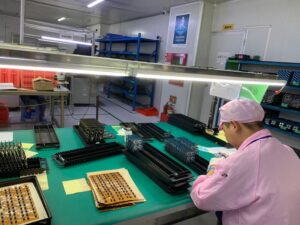
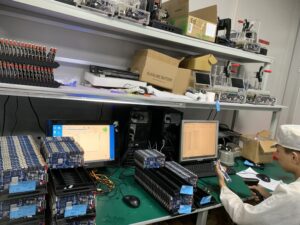


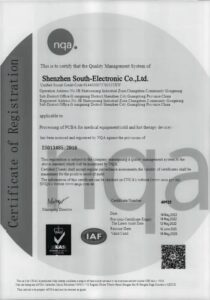
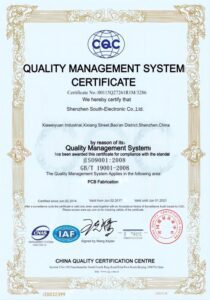
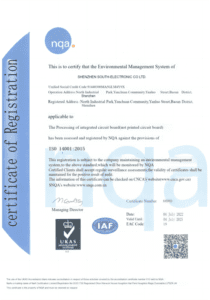




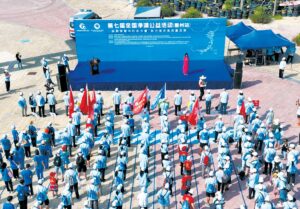
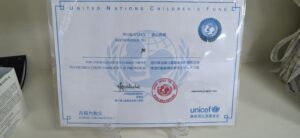
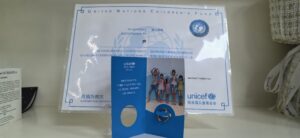

The Complete Guide for Sensor Sourcing
Contents
Chapter 1

Understanding Sensor Types and Application
Sensors are integral to modern technology, providing essential data for a wide range of applications. There are several types of sensors, each designed for specific functions, and understanding their unique characteristics is critical for selecting the right sensor for a particular application. Here’s a deeper dive into some of the most common sensor types and their respective applications.
Temperature Sensors
Temperature sensors are designed to measure changes in temperature, and they are used in a vast array of industries and devices. These sensors can detect temperature fluctuations in real-time, providing critical data to ensure systems operate within safe and efficient parameters.
- Applications:
- HVAC Systems: Temperature sensors are crucial for regulating heating, ventilation, and air conditioning systems to maintain optimal indoor climate conditions.
- Automotive: In vehicles, temperature sensors monitor engine temperature, cabin temperature, and even tire pressure to ensure safety and comfort.
- Consumer Electronics: Devices such as smartphones, laptops, and wearable gadgets use temperature sensors to prevent overheating and optimize performance.
- Popular Types:
- Thermocouples: These sensors measure temperature through the voltage difference between two metals. They are known for their wide temperature range and are used in harsh environments, such as industrial equipment.
- Resistance Temperature Detectors (RTDs): RTDs measure temperature by correlating the resistance of a material (usually platinum) with temperature. They offer high accuracy and stability, making them ideal for scientific and industrial applications.
Pressure Sensors
Pressure sensors measure the force exerted by gases or liquids within a system. These sensors are crucial for monitoring and controlling various processes where pressure levels directly affect safety, efficiency, and performance.
Applications:
- Automotive Systems: Tire pressure monitoring systems (TPMS) use pressure sensors to alert drivers when tire pressure is too low, improving safety and fuel efficiency.
- Industrial Machinery: In factories and processing plants, pressure sensors are used to monitor systems like pumps, tanks, and pipelines to prevent malfunctions and optimize workflow.
- Medical Devices: Pressure sensors are commonly used in medical equipment, such as blood pressure monitors, ventilators, and infusion pumps, where accurate readings are essential.
Popular Types:
- Piezoelectric Pressure Sensors: These sensors generate an electrical charge when subjected to pressure, making them ideal for measuring dynamic pressure changes. They are often used in applications like automotive and industrial machinery.
- Capacitive Pressure Sensors: These sensors detect changes in pressure by measuring the variation in capacitance. They are known for their accuracy and reliability, making them suitable for both industrial and medical applications.
Proximity Sensors
Proximity sensors detect the presence or absence of objects within a defined range without making physical contact. These sensors are widely used in automation, robotics, and security systems, where precise detection is required.
Applications:
- Automation Systems: In manufacturing lines, proximity sensors help detect the position of parts and products, enabling automated processes and robotic arms to operate efficiently.
- Smartphones: These sensors are essential in modern smartphones for features like screen dimming when the device is held close to the face during a call.
- Security Systems: Proximity sensors are used in security systems to detect intrusions or the presence of people within a designated area.
Popular Types:
- Inductive Proximity Sensors: These sensors detect metallic objects by measuring changes in inductance. They are commonly used in industrial automation systems.
- Capacitive Proximity Sensors: These sensors can detect both metallic and non-metallic objects by measuring changes in capacitance. They are ideal for applications where objects may not be metallic, such as in plastic manufacturing.
- Ultrasonic Proximity Sensors: These sensors use sound waves to detect objects and measure distance. They are commonly used in robotics and vehicle parking assistance systems.
Motion Sensors
Motion sensors detect the movement of objects or people within a defined area, making them vital for security, energy management, and user interaction applications.
Applications:
- Security Systems: Motion sensors are used in alarm systems to detect unauthorized movement, triggering alerts and cameras to capture potential intruders.
- Automatic Lighting Controls: These sensors help reduce energy consumption by turning lights on when someone enters a room and turning them off when the room is empty.
- Gaming Devices: In gaming systems, motion sensors allow players to interact with the game through physical movement, enhancing the user experience.
Popular Types:
- Infrared (IR) Motion Sensors: These sensors detect infrared radiation emitted by objects, making them ideal for applications like security systems and automatic lighting controls.
- Microwave Motion Sensors: Microwave sensors emit high-frequency radio waves to detect movement. They are often used in environments where infrared sensors may not be effective, such as through walls or in large, open spaces.
Conclusion
Each type of sensor plays a critical role in various industries, from automotive to consumer electronics, and even healthcare. Understanding the specific characteristics and applications of sensors like temperature, pressure, proximity, and motion sensors is essential for selecting the right one for your needs. For example, automotive industries rely heavily on pressure and temperature sensors for safety and efficiency, while proximity and motion sensors are often used in consumer electronics for enhanced user interaction and convenience. By choosing the right sensor, businesses can optimize performance, ensure safety, and meet specific operational needs with precision.
Chapter 2
Key Considerations for Sensor Selection
Selecting the right sensor for your application is crucial to ensure optimal performance, reliability, and longevity. Given the wide variety of sensors available, each with different specifications, selecting the right one involves carefully considering several key factors that will directly impact the efficiency and functionality of your system. Here are the most important factors to consider:
Performance Specifications
The performance of the sensor is one of the most important considerations when selecting the right one for your application. Critical specifications to assess include:
- Accuracy: How precise is the sensor in measuring the intended parameter? For applications requiring high precision, such as medical devices, even small errors in measurement can lead to significant consequences. For example, a temperature sensor in a medical device must be highly accurate to ensure proper functioning and patient safety.
- Measurement Range: Ensure that the sensor’s range is appropriate for your application. For example, a pressure sensor used in automotive applications needs a different pressure range than one used in industrial processes.
- Sensitivity: This refers to the sensor’s ability to detect small changes in the parameter being measured. In environments where minor changes are critical (like environmental monitoring or biomedical devices), a highly sensitive sensor is essential to detect subtle variations in data.
Environmental Factors
Sensors often operate in specific environments that can significantly impact their performance. These environmental conditions must be taken into account during the selection process. Key environmental factors to consider include:
- Temperature: Sensors can only operate within certain temperature ranges. If your sensor will be exposed to extreme heat or cold, make sure it can withstand these conditions without degrading in performance.
- Humidity: Sensors used in outdoor or industrial environments must be resistant to moisture and condensation, which can corrode internal components and affect measurement accuracy.
- Chemical Exposure: For sensors used in harsh environments (such as factories or laboratories), exposure to chemicals or corrosive substances is a critical consideration. Sensors must be made of durable materials, such as stainless steel or protective coatings, to resist corrosion.
- Vibration and Shock: In applications like automotive or industrial machinery, sensors must be rugged enough to handle vibrations, shocks, and physical stresses that can affect their performance over time.
By thoroughly assessing the environmental conditions where the sensor will be deployed, you can choose a sensor that can perform reliably and withstand the specific challenges of that environment.
Compatibility
Sensor compatibility is another crucial factor to ensure seamless integration with your existing systems. Before selecting a sensor, consider:
- Communication Protocols: Sensors communicate with other devices and systems through various protocols, such as I2C, SPI, or analog outputs. It’s essential that the sensor’s communication method is compatible with your existing system to avoid integration issues.
- Power Requirements: Different sensors may require different power sources, whether it’s battery-operated, low-voltage, or mains-powered. It’s important to select a sensor whose power requirements match the available supply in your system.
- Physical Dimensions: Sensors come in various sizes and shapes. Make sure the sensor will physically fit into your system or device without causing interference with other components.
Ensuring that your sensor is compatible with the other hardware and software components of your system will avoid integration problems and help maintain overall system performance.
Durability and Lifespan
A sensor’s durability and expected lifespan are critical, particularly in industrial or harsh environments where frequent maintenance or replacements can be costly and disruptive. Factors to evaluate include:
- Materials and Construction: The materials used in the construction of the sensor can impact its durability. For instance, sensors made from high-quality, corrosion-resistant materials, such as stainless steel or specialized plastics, will last longer and perform better in tough conditions.
- Expected Lifespan: Understand the manufacturer’s expected lifespan for the sensor. Long-lasting sensors not only reduce maintenance costs but also reduce downtime and potential system failures.
- Maintenance Requirements: Consider how easy it is to maintain the sensor. Sensors that require frequent recalibration or special care may not be ideal in applications where minimal maintenance is preferred.
By selecting durable sensors with a long lifespan, you can minimize operational disruptions and maintenance costs, enhancing the efficiency of your overall project.
Cost
While performance and reliability are critical, the cost of the sensor is always an important consideration. Balancing your budget with the sensor’s capabilities is key to finding the most cost-effective solution. Consider:
- Budget Constraints: If your project has a strict budget, you may need to prioritize essential features over premium specifications. For instance, a less expensive sensor may meet the requirements for a general industrial application, while a high-end sensor with advanced features may be necessary for precision tasks in research or medical fields.
- Long-Term Value: Sometimes, spending more upfront on a higher-quality sensor can save costs in the long run by reducing maintenance needs and improving system efficiency.
- Total Cost of Ownership: Beyond the initial purchase cost, consider the total cost of ownership, including installation, maintenance, and possible downtime. A cheaper sensor may require more frequent replacements or incur higher operational costs over time.
By balancing cost with the required specifications, you can ensure that the selected sensor meets your needs without overspending.
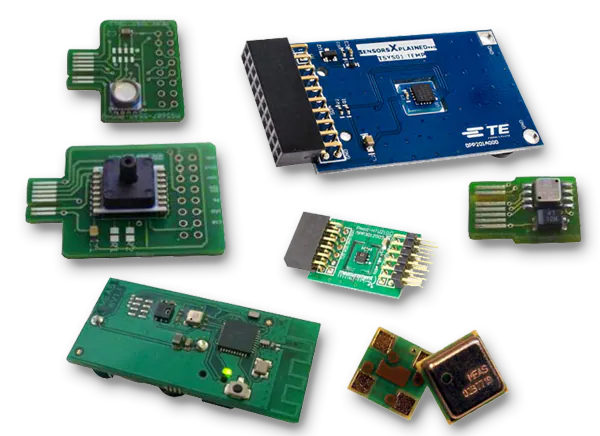
Chapter 3
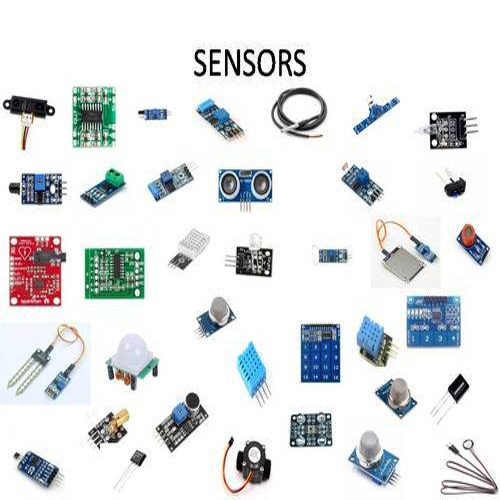
The Importance of Quality Assurance in Sensor Sourcing
Quality assurance is an essential factor in the sourcing of sensors. High-quality sensors are the backbone of reliable, long-lasting systems, and they play a vital role in ensuring that your devices or machinery operate optimally over time. Here’s why quality assurance is so important when sourcing sensors:
Testing and Certification
Reputable sensor manufacturers adhere to international quality standards and certifications, such as ISO 9001, which demonstrates that their products meet globally recognized quality criteria. These certifications ensure that the sensors have undergone thorough testing to confirm they meet the required specifications for safety, reliability, and performance.
In addition to manufacturer certifications, third-party testing offers an additional layer of credibility. Independent testing labs verify that the sensors meet or exceed expected performance benchmarks, providing an extra level of assurance regarding their reliability and functionality in real-world conditions.
Quality Control Procedures
Quality control is at the heart of any reliable manufacturing process. For sensors, this involves a series of carefully managed procedures to ensure the consistency and performance of each unit. These include:
Batch Testing: In this process, random samples are taken from each production batch and rigorously tested to verify that the entire batch meets quality standards. This helps identify any potential defects or variations in performance before the sensors are shipped.
Visual and Functional Inspections: Manufacturers often perform visual inspections to check for physical defects (e.g., cracks, scratches, or damaged connectors) and functional checks to ensure the sensors are operating within their defined parameters.
By implementing these stringent quality control processes, manufacturers can minimize the risk of defects and deliver sensors that consistently perform as expected.
Documentation
One of the critical components of quality assurance is documentation. High-quality sensors come with comprehensive documentation that provides transparency and traceability. This documentation often includes:
- Test Reports: Detailed reports from quality assurance testing, confirming the sensor’s performance and functionality.
- Compliance Certificates: Certificates that show the sensor meets specific regulatory standards or industry requirements.
- Material Specifications: Information about the materials used in manufacturing the sensors, which is especially important for applications where sensor durability or resistance to harsh environments is critical.
These documents serve as proof that the sensor has met the required quality standards and are crucial for validating the sensor’s suitability for your specific application.
Supplier Reputation
Selecting a reputable supplier is one of the most effective ways to ensure the quality of your sensors. Suppliers with strong reputations for delivering high-quality products are more likely to provide reliable and accurate sensors. To assess a supplier’s reliability, consider:
- Researching Supplier Backgrounds: Look into the supplier’s history, market presence, and any industry certifications or awards they may have received.
- Reading Customer Reviews: Reviews from other businesses and customers who have used the supplier’s sensors can provide valuable insights into the quality and reliability of their products.
- Requesting References: If necessary, ask the supplier for references from previous clients to get a better understanding of their product quality and customer service.
By partnering with trusted suppliers, you reduce the risk of receiving subpar sensors and ensure that your project will benefit from reliable, high-performing components.
By focusing on testing and certification, implementing thorough quality control procedures, ensuring full documentation, and working with reputable suppliers, you can confidently source high-quality sensors. This not only guarantees superior performance and reliability but also fosters trust with customers and partners, ultimately contributing to the long-term success of your projects and business.
Chapter 4
Customization Options for Sensors
Customization offers a valuable edge when sourcing sensors, allowing you to tailor the sensor’s design, performance, and features to suit your specific project needs. This flexibility ensures that sensors not only meet but exceed the requirements of your unique applications. Here are some key customization options available for sensors:
Custom Specifications
One of the primary benefits of sensor customization is the ability to adjust performance characteristics to match specific application requirements. Key specifications that can be customized include:
- Sensitivity: Sensors can be fine-tuned to detect minute changes in the measured parameter, which is especially crucial in fields like medical devices or precision manufacturing.
- Measurement Range: Depending on the application, sensors can be customized to measure a wider or narrower range of parameters. For example, a temperature sensor used in industrial applications may need to operate at extreme high or low temperatures, while one used in consumer electronics may have a more moderate range.
- Response Time: Some applications, such as automotive or industrial safety systems, require sensors with fast response times to detect changes in real-time. Custom sensors can be designed to provide faster or more accurate responses.
For example, in automotive applications, temperature sensors can be customized to perform accurately under extreme temperature fluctuations, ensuring that the sensor continues to operate reliably within the harsh conditions of engine compartments.
Special Materials
Customization can also extend to the materials used in sensor construction, which can significantly affect performance and durability. Certain applications may require sensors to operate in harsh environments, and using specialized materials helps enhance the sensor’s resistance to environmental factors. For example:
- Corrosion-Resistant Materials: Sensors used in chemical processing plants or offshore platforms may need to be constructed from materials such as stainless steel or titanium to resist corrosion from harsh chemicals or saltwater.
- High-Temperature Materials: For sensors operating in high-heat environments, like furnaces or engines, materials with high thermal resistance, such as ceramics or specialized alloys, can be used to maintain sensor integrity over time.
The use of specialized materials ensures that sensors can withstand the specific environmental challenges posed by your industry or application.
Design Adaptations
Customization can also improve how sensors integrate into existing systems, especially when space, size, or mounting options are a concern. Some design adaptations include:
- Size and Shape Modifications: Sensors can be designed in specific sizes and shapes to fit into compact or unconventional spaces. This is particularly useful in consumer electronics, where sensors need to be integrated into small devices like smartphones or wearables.
- Mounting and Connector Options: Sensors can be adapted to include custom mounting options, ensuring that they can be easily installed and securely attached within complex systems.
For example, a custom proximity sensor could be designed to fit within a small compartment in a mobile phone or a tight space in a piece of industrial equipment, improving overall system performance without sacrificing accuracy.
Firmware and Software Customization
In the world of smart sensors and IoT devices, firmware and software play a pivotal role in sensor functionality. Custom firmware and software development can optimize how a sensor processes data, communicates with other devices, and integrates into a larger network. Key customization options include:
- Data Processing: Custom firmware can be written to process data in a way that optimizes performance for specific applications, such as filtering noise or compressing data for more efficient transmission.
- Real-Time Capabilities: Sensors used in applications where real-time data processing is essential (e.g., industrial automation, health monitoring, or smart homes) can be customized with software that ensures immediate responses to changes in environmental conditions.
- Communication Protocols: Custom sensors can be developed to communicate using specific IoT protocols, like MQTT or Zigbee, allowing them to integrate seamlessly into smart networks and cloud-based applications.
For example, an IoT temperature sensor could be customized with firmware to trigger alerts based on pre-set temperature thresholds, enabling proactive monitoring of critical environments like data centers or laboratories.
Conclusion
The benefits of customizing sensors are substantial. By tailoring sensors to your specific requirements, you can achieve enhanced performance, increased reliability, and better system integration. Custom sensors also offer a competitive advantage, enabling you to meet unique application needs that off-the-shelf solutions cannot address. Whether through adjusting specifications, using special materials, or developing custom software, the possibilities for sensor customization allow for more precise, effective solutions across a wide range of industries.
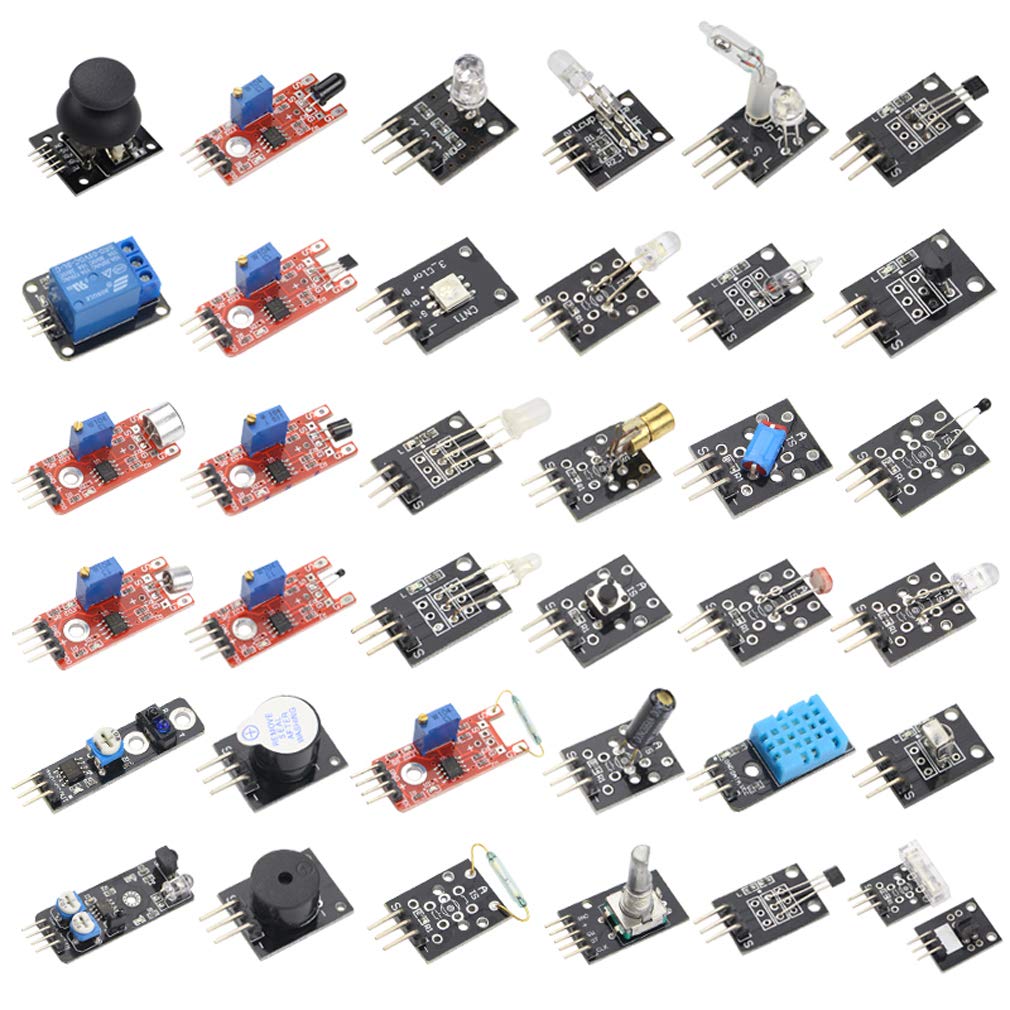
Chapter 5

The Sensor Sourcing Process
The sensor sourcing process is a systematic approach designed to ensure that the right sensors are selected for your application, meeting both technical and operational requirements. Here is a step-by-step guide to the process:
1. Consultation and Requirements Analysis
The first step in the sensor sourcing process is to conduct a detailed consultation with the client to understand their specific needs and goals. This involves gathering information about the application, the performance specifications required, and the environmental conditions in which the sensors will operate. Key factors to analyze include:
- Application requirements: What is the sensor measuring, and how does it need to perform in your system?
- Performance specifications: Desired accuracy, response time, range, and sensitivity.
- Environmental conditions: Operating temperature, humidity, exposure to chemicals, or physical stresses.
A thorough requirements analysis helps define the most suitable sensor types and any necessary customization options, ensuring the right fit for your project.
2. Supplier Selection
Based on the gathered requirements, the next step is to select potential suppliers who are capable of meeting your needs. Key criteria to evaluate suppliers on include:
- Reputation: Does the supplier have a proven track record in providing high-quality sensors for your industry?
- Experience: Does the supplier have experience with the specific sensor type and application you require?
- Quality assurance: What kind of testing, certifications, and quality control procedures does the supplier follow?
Requesting samples and conducting preliminary testing allows you to assess the performance, reliability, and suitability of the sensors before making a final decision.
3. Quotation and Negotiation
Once you’ve shortlisted potential suppliers, it’s time to request quotations based on your requirements. During this stage, you’ll discuss important details such as:
- Pricing: Ensure the cost aligns with your budget while meeting quality expectations.
- Delivery schedules: Confirm lead times and timelines for sensor delivery.
- Warranty conditions: Review warranty terms, including duration, coverage, and after-sales support.
Clear and open negotiation helps avoid misunderstandings and ensures all terms are well-defined and documented before moving forward.
4. Testing and Quality Assurance
Before placing an order, it’s crucial to conduct comprehensive testing to verify the sensor’s performance, reliability, and compliance with your specifications. This may involve:
- In-house testing: Evaluate sensors under real-world conditions to ensure they meet the technical requirements.
- Third-party testing: Engaging an independent testing lab adds another layer of assurance regarding the sensor’s quality and reliability.
Thorough quality assurance procedures will help confirm that the sensors will perform as expected in your application.
5. Order Placement and Production
Once the sensors pass all tests and meet the required standards, you can place the order and initiate production. It’s important to maintain continuous communication with the supplier throughout the production phase to:
- Monitor production progress.
- Address any potential issues promptly.
- Ensure that timelines and quality standards are adhered to.
Close oversight during production helps mitigate the risk of delays or production errors.
6. Delivery and Integration Support
The final step is ensuring timely delivery of the sensors to your location. After delivery, integration support is crucial to ensure smooth installation and functionality within your system. This can include:
- Technical assistance: Providing expertise on sensor integration, calibration, and setup.
- Troubleshooting: Addressing any issues that arise during installation or initial testing.
- Training: Offering training sessions to help your team understand how to effectively use and maintain the sensors.
By following this well-defined process, you can ensure that you source high-quality sensors that perfectly meet your project requirements, reducing the likelihood of delays, performance issues, or unexpected costs.
Chapter 6
Supplier Evaluation and Selection
Choosing the right supplier is one of the most important steps in the sensor sourcing process, as it directly impacts the quality, reliability, and cost-effectiveness of the sensors you procure. Here are the key criteria to consider when evaluating and selecting a supplier:
1. Reputation and Experience
The supplier’s reputation and industry experience play a significant role in determining the quality of service and products they provide. A supplier with a solid track record is more likely to deliver sensors that meet your performance requirements. To evaluate a supplier’s reputation:
- Research customer reviews and testimonials to assess the satisfaction of other clients.
- Case studies can provide insight into the supplier’s experience in similar applications, demonstrating their capability to meet the unique needs of your project.
- Suppliers with a long history of working with well-known companies or industries are often more reliable, as their experience ensures better performance and product quality.
2. Quality Assurance Practices
A robust quality assurance (QA) system ensures that the sensors you receive meet your required specifications and are free from defects. Evaluate the supplier’s quality practices by considering:
- Testing procedures: Does the supplier conduct comprehensive testing at various stages of production to ensure quality?
- Certifications: Verify whether the supplier holds internationally recognized certifications, such as ISO 9001, indicating their commitment to maintaining high quality standards.
- Quality control measures: How does the supplier monitor and control the quality of their sensors throughout production? Look for transparency in their QA processes, including batch testing, third-party verifications, and traceable documentation.
Ensure that the supplier can provide quality assurance documentation, such as compliance certificates, test reports, and material specifications, to back up their claims of quality.
3. Technical Expertise
Assessing a supplier’s technical expertise is crucial, especially when custom sensors or specialized solutions are needed. Suppliers with strong technical knowledge can provide valuable guidance and ensure that the sensors meet the specific needs of your application. Key aspects to consider include:
- Knowledge of sensor technologies: Does the supplier have deep expertise in the latest sensor technologies and innovations?
- Materials and design capabilities: Can the supplier offer specialized materials or sensor designs tailored to your environment or industry?
- Customization capabilities: If you need sensors with specific features (e.g., customized range, size, or sensitivity), ensure that the supplier has the ability to deliver these custom solutions effectively.
A supplier with strong technical expertise can also assist with complex integration and troubleshooting, ensuring smoother deployment and performance.
4. Customer Support
Excellent customer support is essential for addressing any issues that may arise during the sourcing process or after sensor delivery. Evaluate the level of support the supplier provides by considering:
- Responsiveness: Does the supplier respond promptly to inquiries and concerns? A supplier who is quick to address issues can help avoid delays in your project.
- Technical assistance: Does the supplier offer ongoing support for sensor integration, troubleshooting, and calibration? This is especially important for complex systems.
- Training and after-sales service: Does the supplier provide training for your team on sensor operation and maintenance? Do they offer after-sales support to help resolve any post-delivery issues?
The level of customer service can significantly affect the overall experience of sourcing sensors, making it a crucial factor in supplier selection.
5. Pricing and Terms
Finally, the cost and terms of the sensor procurement must align with your budget and project requirements. However, it’s essential to balance price with quality—cheaper options might not always offer the best value in the long run. Consider the following:
- Pricing comparison: Gather quotations from multiple suppliers to ensure competitive pricing. Evaluate what is included in the price (e.g., warranties, testing, documentation, delivery fees).
- Delivery schedules: Make sure the supplier can meet your required delivery timelines. Delays in delivery can have a significant impact on your project schedule.
- Warranty conditions: Ensure the supplier offers favorable warranty terms to protect your investment in case of defects or performance issues.
- Payment terms: Negotiate clear and favorable payment terms that suit your budget and cash flow requirements.
By carefully reviewing the supplier’s pricing structure and terms, you can make a more informed decision that maximizes your investment while ensuring reliable and timely sensor delivery.

Chapter 7
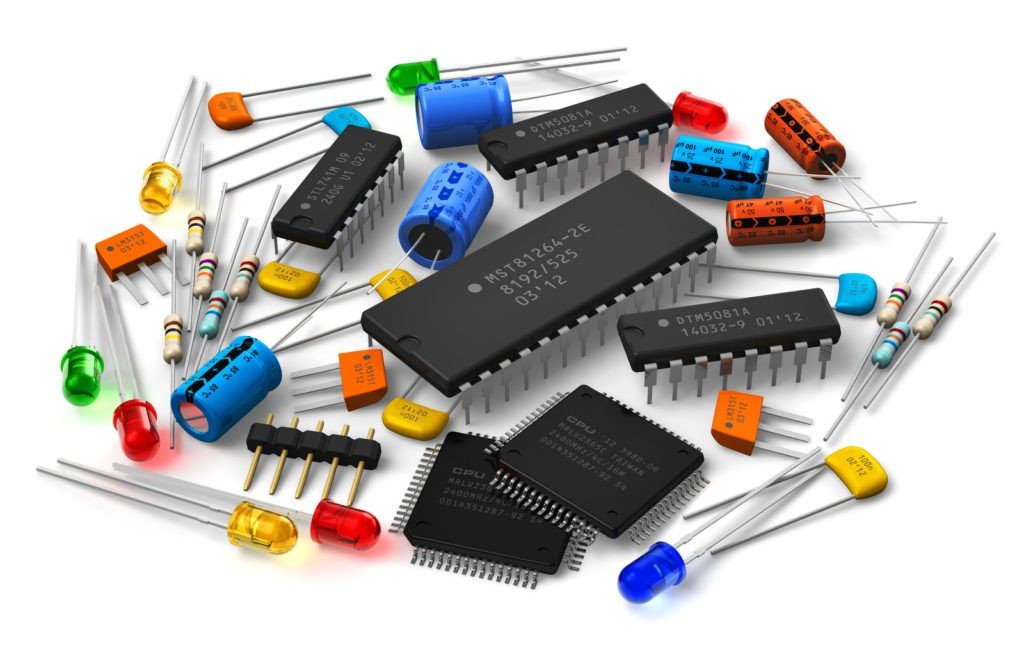
Managing the Supply Chain
Effective supply chain management is essential for ensuring the timely delivery and cost-efficiency of sensors, making it a critical factor in successful sourcing. The following strategies can help streamline the process and ensure that your sensor procurement runs smoothly:
1. Logistics and Delivery
Efficient logistics management is key to ensuring that sensors are delivered on time and in good condition. Key actions to take include:
- Coordinating with suppliers: Stay in close communication with suppliers to ensure that delivery schedules are met. This includes confirming lead times and shipping details well in advance.
- Managing shipping schedules: Carefully plan and monitor shipping schedules to avoid delays, especially for international shipments that may be subject to customs clearance.
- Handling customs clearance: For international sourcing, work with experienced logistics partners who are familiar with customs regulations and procedures to avoid delays at borders.
Choosing reliable logistics partners and planning for unexpected delays can help minimize disruptions in the supply chain and ensure on-time delivery.
2. Inventory Management
Maintaining an optimal inventory of sensors is crucial to avoid stockouts and overstocking, both of which can result in operational disruptions or excessive costs. Key inventory management practices include:
- Tracking stock levels: Implement an inventory management system to monitor stock levels in real time. This allows you to stay on top of your inventory and avoid shortages or excess.
- Forecasting demand: Use historical data and market trends to forecast future sensor demand. Accurate demand forecasting helps avoid delays due to stockouts while preventing overordering.
- Managing reorders: Set up reorder triggers that automatically place new orders when inventory falls below a certain threshold, ensuring a continuous supply of sensors without excess stock.
Effective inventory management helps maintain a steady flow of sensors while reducing storage costs and improving cash flow.
3. Cost Optimization
Cost optimization strategies ensure that you stay within budget while maintaining the quality of sensors. Consider the following actions to reduce costs:
- Negotiating bulk discounts: Work with suppliers to secure discounts on large orders or long-term contracts. Bulk purchasing can significantly reduce the unit cost of sensors.
- Optimizing shipping routes: By working with experienced logistics providers, you can identify the most cost-effective shipping routes, reducing transportation costs and delivery time.
- Leveraging economies of scale: If your organization requires large quantities of sensors, take advantage of economies of scale to negotiate better pricing, potentially with volume-based discounts.
Collaborating with suppliers to identify cost-effective solutions ensures that you get the best value without compromising on sensor quality.
4. Risk Management
Supply chain disruptions are inevitable, so developing a solid risk management plan is essential. Strategies to minimize risk include:
- Diversifying suppliers: Relying on a single supplier can expose you to significant risks if issues arise. Consider multiple suppliers from different regions to reduce the likelihood of a complete disruption.
- Maintaining safety stock: Keep a buffer stock of essential sensors in case of delays or supply shortages. This helps mitigate the impact of unexpected disruptions.
- Contingency plans: Have contingency plans in place for common supply chain disruptions, such as delays, shipping issues, or product defects. Regularly review and update these plans to adapt to new challenges.
Proactively managing risks ensures that your supply chain remains resilient in the face of potential disruptions.
By implementing these strategies, you can effectively manage your supply chain, ensuring that the right sensors are available when needed, at competitive prices, and with minimal delays. This leads to a more reliable and cost-efficient flow of materials, ultimately supporting the success of your projects.
Chapter 8
Ensuring Long-Term Reliability and Support
Ensuring the long-term reliability and support of your sensors is critical for maintaining optimal performance, minimizing downtime, and extending the lifespan of your systems. Here’s how to ensure your sensors continue to meet your needs over time:
1. Warranty and After-Sales Service
Choose suppliers that offer extended warranties and comprehensive after-sales service to safeguard the performance of your sensors:
- Extended warranties: A longer warranty period gives you peace of mind that the sensor will continue to operate as expected and reduces the risk of unforeseen repair or replacement costs.
- After-sales service: Look for suppliers that provide ongoing support after the initial sale. This includes troubleshooting, repairs, or replacements should any issues arise, ensuring that your sensors continue to function reliably over time.
A robust warranty and after-sales service offer long-term protection and enhance the overall value of your sensor investments.
2. Ongoing Supplier Relationships
Building strong, long-term relationships with your suppliers is crucial for continuous support and improvement:
- Regular communication: Establish open lines of communication to address any issues quickly. By fostering a collaborative relationship, you can ensure that any problems are identified and resolved promptly.
- Trust and reliability: Working with a trusted supplier can lead to mutual benefits, such as better pricing, priority support, and the opportunity to access customized solutions tailored to your evolving needs.
- Supplier collaboration: Long-term relationships create opportunities for innovation and improvement, allowing your supplier to better understand your needs and offer solutions that align with your business goals.
By maintaining a consistent relationship with suppliers, you can ensure you have the support you need as your requirements change over time.
3. Maintenance and Calibration
Regular maintenance and calibration are essential for ensuring that your sensors continue to provide accurate and reliable readings:
- Maintenance schedules: Set up regular maintenance schedules to inspect and clean sensors, check for wear and tear, and ensure proper functioning.
- Calibration procedures: Develop standard procedures for calibrating sensors at specified intervals to maintain accuracy. This is especially important for sensors used in precision applications like medical devices or industrial systems.
- Supplier support: Work with your suppliers to establish clear maintenance protocols and gain access to their calibration services, ensuring that your sensors remain in optimal condition over time.
Proper maintenance and calibration help extend the lifespan of your sensors and prevent performance degradation.
4. Continuous Improvement
Keep pace with advancements in sensor technology to stay competitive and ensure long-term success:
- Adopt new technologies: Stay informed about the latest innovations in sensor technologies, such as smart sensors and IoT integration, to enhance the capabilities of your systems.
- Improve quality control: Regularly assess and update your quality control procedures to ensure that sensors meet the highest standards.
- Optimize supply chain management: Continually evaluate and refine your supply chain processes to improve efficiency, reduce costs, and address emerging challenges.
By embracing continuous improvement, you can ensure that your sensor sourcing practices remain aligned with industry trends and best practices, ultimately enhancing your system’s performance and longevity.
Ensuring long-term reliability and support will keep your sensors functioning at their best, providing consistent performance and value to your projects, while also strengthening your relationship with suppliers and customers.
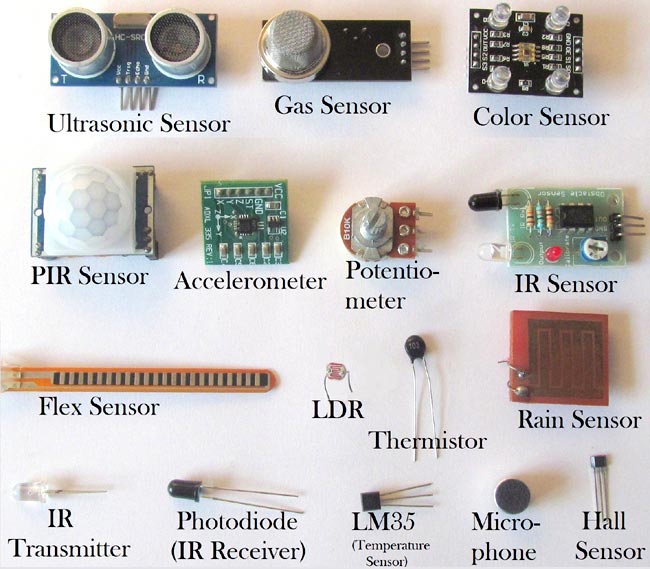
Chapter 9
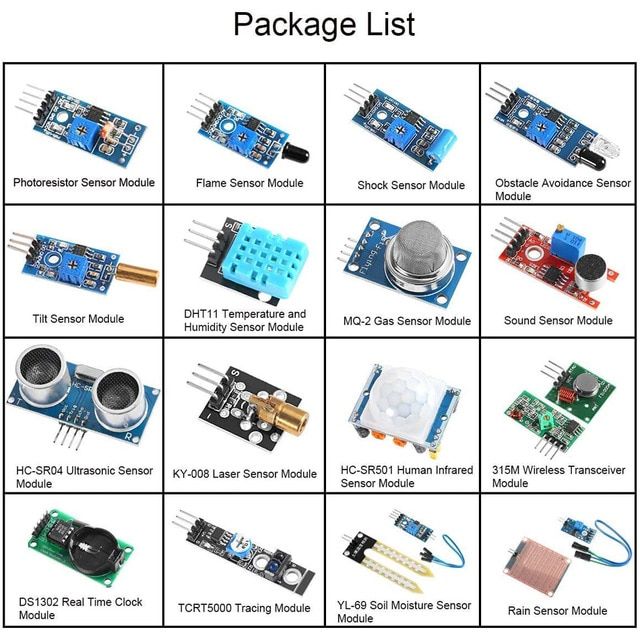
Addressing Common Challenges in Sensor Sourcing
Sensor sourcing, while essential, can present several challenges that can affect the quality, timeliness, and overall success of your projects. Here’s how to tackle some of the most common issues:
1. Dealing with Counterfeits
Counterfeit sensors pose a significant risk to the performance and reliability of your systems. These sensors may not meet the required specifications, leading to operational failures. To avoid counterfeits:
- Work with reputable suppliers: Ensure your suppliers adhere to strict quality assurance practices and have a history of delivering authentic, high-quality sensors.
- Verify authenticity: Conduct third-party testing to verify that the sensors meet the required standards. Request quality assurance documentation, such as certificates of conformity, test reports, and material specifications, to ensure authenticity.
- Request product samples: Testing samples before bulk orders can provide an additional layer of assurance against counterfeit products.
By taking these precautions, you can significantly reduce the risk of counterfeit sensors affecting your operations.
2. Overcoming Communication Barriers
Effective communication is vital, especially when working with international suppliers who may have different languages and cultural norms. To overcome communication barriers:
- Clear and concise communication: Use simple, direct language to avoid misunderstandings. Ensure that all technical specifications, timelines, and requirements are communicated clearly.
- Leverage translation services: If language differences are significant, consider using professional translation services to ensure accurate communication and prevent errors in your order.
- Establish regular communication channels: Set up regular meetings (virtual or face-to-face) to review progress, clarify details, and ensure that both parties are on the same page throughout the sourcing process.
Strong communication practices help bridge gaps and ensure that all parties are aligned on expectations and deliverables.
3. Managing Lead Times
Long lead times can disrupt project timelines, delay deliveries, and increase costs. To manage lead times effectively:
- Plan ahead: Start the sourcing process as early as possible to accommodate longer lead times. Factor in potential delays from suppliers, customs, or shipping logistics when setting deadlines.
- Maintain optimal inventory levels: By keeping a buffer stock of critical sensors, you can avoid disruptions in case of unexpected delays.
- Work with suppliers to establish reliable delivery schedules: Negotiate with suppliers for realistic lead times and confirm their ability to meet deadlines. If time is critical, explore expedited shipping options to shorten lead times.
Proactive planning and inventory management can help mitigate the risks posed by long lead times.
4. Ensuring Quality Consistency
Maintaining consistent quality across large orders can be challenging, especially when working with multiple suppliers or high-volume production runs. To ensure quality consistency:
- Implement strict quality control procedures: Ensure that the supplier conducts batch testing and quality inspections at different stages of production. This will help identify any deviations from the agreed specifications before shipment.
- Establish clear quality standards: Clearly define your quality requirements with the supplier, including tolerance levels, performance metrics, and durability standards.
- Collaborate with suppliers to resolve issues: Maintain open communication with your suppliers and quickly address any quality concerns. Prompt issue resolution helps maintain high standards and prevents recurring problems.
By focusing on quality control and building strong supplier relationships, you can ensure the consistency of your sensor quality.
Conclusion
By proactively addressing these common challenges—counterfeiting, communication barriers, lead time management, and quality consistency—you can ensure a smoother and more efficient sensor sourcing process. Taking the right precautions and fostering strong supplier relationships will help minimize risks, improve reliability, and maximize the efficiency of your sourcing operations.
Chapter 10
Future Trends in Sensor Technology
The field of sensor technology is rapidly evolving, with continuous advancements in materials, design, and applications. Staying ahead of these trends is crucial for businesses seeking to integrate cutting-edge sensors into their systems. Here are some key future trends to watch:
1. Innovations and Emerging Technologies
New materials and emerging technologies are driving the development of more advanced sensors with enhanced performance and new capabilities:
- New Materials: Materials like graphene and flexible polymers are opening new possibilities for sensors. Graphene, for example, offers incredible conductivity and strength, making it ideal for ultra-sensitive sensors. Flexible polymers enable the creation of bendable and stretchable sensors, which can be used in wearable devices and flexible electronics.
- MEMS (Micro-Electro-Mechanical Systems): MEMS technology is enabling the development of tiny, highly efficient sensors with applications across multiple industries, from automotive to medical devices. These sensors are becoming smaller, more powerful, and capable of performing more complex tasks while consuming less power.
- IoT (Internet of Things): IoT is pushing the integration of smart sensors that can collect, transmit, and process data in real-time. These sensors are a core part of connected systems, where they help drive automation and improve operational efficiency in industries such as smart homes, healthcare, and manufacturing.
As these innovations continue to advance, sensor sourcing strategies will need to adapt to accommodate new sensor technologies, materials, and capabilities. This means working with forward-thinking suppliers who are developing and adopting these new technologies.
2. Sustainability and Environmental Considerations
As global attention shifts towards sustainability, sensor technology is also evolving to meet environmental goals:
- Eco-friendly Sensors: There is growing demand for sensors made from sustainable materials that have minimal environmental impact. Manufacturers are focusing on creating sensors that are non-toxic, biodegradable, or made from recycled materials.
- Energy Efficiency: Future sensors are being designed to consume less power while maintaining or improving performance. This is especially important in applications like wearable devices, remote sensing, and IoT, where low energy consumption can extend battery life and reduce environmental impact.
- Recyclability: As part of the broader trend toward sustainability, sensor manufacturers are also exploring ways to design sensors that can be easily recycled at the end of their lifecycle, helping reduce electronic waste.
For sensor sourcing, it’s important to prioritize sustainability by selecting suppliers that are committed to developing green technologies and environmentally-friendly products. This helps align with both regulatory requirements and corporate social responsibility (CSR) goals.
3. Enhanced Data Analytics
The integration of advanced data analytics and machine learning with sensor technology is transforming how data is processed and utilized:
- Real-Time Data Processing: Future smart sensors will not only collect data but also process it in real-time. This allows for faster decision-making and enables immediate responses to changing conditions, which is crucial in applications like industrial automation, healthcare, and autonomous vehicles.
- Improved Decision-Making: By incorporating machine learning algorithms, sensors can learn from past data and improve their accuracy and predictive capabilities. This enables more precise monitoring, diagnosis, and optimization of systems, leading to better resource management and cost savings.
- Actionable Insights: Sensors equipped with advanced analytics capabilities can provide more accurate, actionable insights, enabling businesses to optimize operations, reduce waste, and make more informed decisions.
As sensors become smarter and more capable of analyzing their own data, sensor sourcing strategies will need to consider suppliers who offer advanced sensors with built-in analytics capabilities.
Staying informed about these future trends helps businesses adapt to changing technologies and market demands, ensuring that their sensor sourcing strategies remain competitive and effective in a rapidly evolving landscape. By anticipating these developments, businesses can position themselves to take advantage of the next generation of sensors, driving innovation and efficiency in their operations.

Get in touch
Where Are We?
Industrial Park, No. 438 Donghuan Road, No. 438, Shajing Donghuan Road, Bao'an District, Shenzhen, Guangdong, China
Floor 4, Zhihui Creative Building, No.2005 Xihuan Road, Shajing, Baoan District, Shenzhen, China
ROOM A1-13,FLOOR 3,YEE LIM INDUSTRIAL CENTRE 2-28 KWAI LOK STREET, KWAI CHUNG HK
service@southelectronicpcb.com
Phone : +86 400 878 3488
Send us a message
The more detailed you fill out, the faster we can move to the next step.



